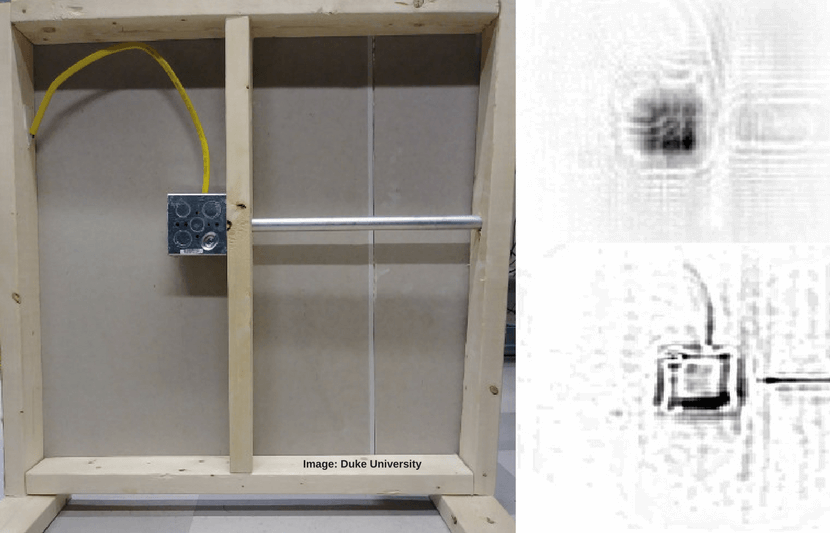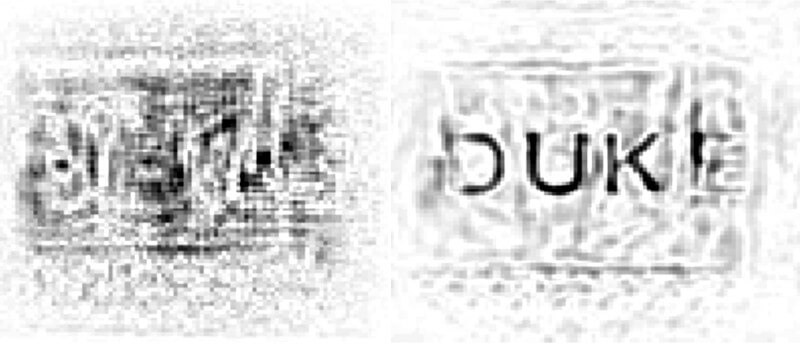Researchers at Duke University have invented a device to see through walls constructed from practical building materials by using a narrow band of microwave frequencies.
This method could be used for security purposes and for the development of inexpensive devices to help construction workers find conduits, pipes, wires, and other building materials inside of walls.
Previous technologies that can see through walls have been very expensive. This new approach could lighten the economic burden.
“Most radars that would be required for imaging at the small scale to identify objects inside a wall require a bandwidth that is economically infeasible,” said Daniel Marks, associate research professor of electrical and computer engineering at Duke. “Instead of using a large bandwidth, we exploit the symmetry of the wall layers to separate the wall and the objects behind it, and have demonstrated this principle with practical walls and building materials.”
In addition to high costs, most current devices used to see through walls need to know what material the wall is made out of. This allows the devices to process how the wall’s material will affect the scanning waves sent into the wall. This way, the device can differentiate echoes and distortions from solid objects inside the wall.
This new approach doesn’t require knowledge of the material because it recognizes the wall’s symmetry instead. Walls are generally flat and straight, so this new technology symmetrically sends waves through the wall and picks up on the interferences to recognize the location of objects.
“We wrote an algorithm that separates the data into parts—one that shows circular symmetry and another that doesn’t,” Okan Yurduseven, a postdoctoral researcher in electrical and computer engineering at Duke, said in a statement. “The data that doesn’t have any symmetry is what we’re trying to see.”
The new method uses a single frequency and strays away from traditional broadband frequency methods because it is cheaper and cuts down on interference patterns created by the wall.
The researchers also believe that their approach will be easier to clear with the Federal Communications Commission because it doesn’t have to interfere with microwave frequencies used for Wi-Fi, bluetooth, and cell phone service.
The three-person team of Marks, Yurduseven, and David R. Smith, the James B. Duke Professor of Electrical and Computer Engineering, built multiple test walls constructed of different materials and used their prototype device to find studs, electrical conduits, wires and junction boxes placed inside the walls.
By first observing the raw data images developed through the scanning of the gypsum plasterboard, which one of the walls was built out of, it was hard for the researchers to make out anything except for a metal junction box. However, when they removed the symmetrical patterns, the images cleared tremendously, and every component inside the wall was easily recognized.
“We envision combining this technique with a machine vision system that someone could move over a wall to see what’s inside,” Marks said in a statement. “We think the technology has the price point and sensitivity to make an impact on the market.”
Marks even foresees that this method could be applicable in smartphones.
“The transceivers on phones intended for 5G networks will be an even higher frequency and more agile, and it is likely that in addition to its functions as general communications devices and optical imaging devices, the smartphone will become a portable radar imaging unit, enabling one to peer into otherwise opaque objects or measure the dimensions of extended objects or the contents of entire rooms just by moving the phone throughout the room,” said Marks.
To reach a point where this method could be used on portable devices, Marks said the researchers must find a way to miniaturize the hardware.
“Further work is needed to integrate the radio transceiver hardware with smartphone cameras to register the images together, as overlaying the two is likely to be much more useful to the practicing tradesman,” he said. “The symmetry principles, however, are sound, and based on the laws of electromagnetics, and are quite robustly usable for many through-wall imaging applications.”




